How reliable is the water supply in Los Cabos - La Paz, Mexico? Are there water disruptions?
John K. Glaab - the settlement company®
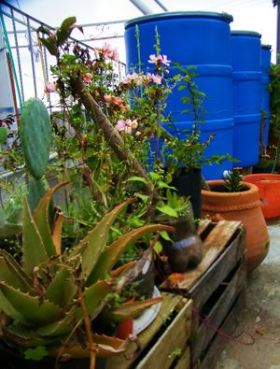 There are not really water disruptions per se but in La Paz, depending on your neighborhood, there are situations where you may have water every other day but people have storage tanks on the roof, which are called tinacos. In our house, where we live, we have two tinacos on the roof of the house and two tinacos on the roof of the office. Lots of people have pumps or cisterns so when the water comes in they store it. After all, let’s not forget that we are living on a desert and we...
There are not really water disruptions per se but in La Paz, depending on your neighborhood, there are situations where you may have water every other day but people have storage tanks on the roof, which are called tinacos. In our house, where we live, we have two tinacos on the roof of the house and two tinacos on the roof of the office. Lots of people have pumps or cisterns so when the water comes in they store it. After all, let’s not forget that we are living on a desert and we... There are not really water disruptions per se but in La Paz, depending on your neighborhood, there are situations where you may have water every other day but people have storage tanks on the roof, which are called tinacos. In our house, where we live, we have two tinacos on the roof of the house and two tinacos on the roof of the office. Lots of people have pumps or cisterns so when the water comes in they store it. After all, let’s not forget that we are living on a desert and we preach conservation.
There are not really water disruptions per se but in La Paz, depending on your neighborhood, there are situations where you may have water every other day but people have storage tanks on the roof, which are called tinacos. In our house, where we live, we have two tinacos on the roof of the house and two tinacos on the roof of the office. Lots of people have pumps or cisterns so when the water comes in they store it. After all, let’s not forget that we are living on a desert and we preach conservation. (Rooftop water collection, Mexico, pictured.)
Posted February 17, 2016
Jimena Malagamba
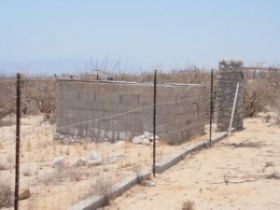 In Baja California Sur, including Los Cabos, La Paz and the other areas, in general, you have to be very careful not to use too much water. Many places do not have potable services, because there are no pipes carrying municipal water, even in certain areas of La Paz and Cabo. As a result, you have to order your water from a water truck and it’s your responsibility to use it wisely. We’re a desert so water is a precious resource.
In Baja California Sur, including Los Cabos, La Paz and the other areas, in general, you have to be very careful not to use too much water. Many places do not have potable services, because there are no pipes carrying municipal water, even in certain areas of La Paz and Cabo. As a result, you have to order your water from a water truck and it’s your responsibility to use it wisely. We’re a desert so water is a precious resource. In the...
 In Baja California Sur, including Los Cabos, La Paz and the other areas, in general, you have to be very careful not to use too much water. Many places do not have potable services, because there are no pipes carrying municipal water, even in certain areas of La Paz and Cabo. As a result, you have to order your water from a water truck and it’s your responsibility to use it wisely. We’re a desert so water is a precious resource.
In Baja California Sur, including Los Cabos, La Paz and the other areas, in general, you have to be very careful not to use too much water. Many places do not have potable services, because there are no pipes carrying municipal water, even in certain areas of La Paz and Cabo. As a result, you have to order your water from a water truck and it’s your responsibility to use it wisely. We’re a desert so water is a precious resource. In the areas with no municipal water, you have a truck which pulls up to your house deposits it you’re your pila, which is a water container on your property. Usually, a pila can hold 10,000 liters or more. The cost for 10,000 liters in our little town of El Sargento is 1,000 Mexican pesos (about US $53), and would last a typical family of 4 for about a month.
There are other places that are connected to municipal water, but even then, that doesn’t mean you’re going to have water every day. You will have water maybe every day through a period of time or you would have it one day yes or one day no or every 3 days. In other places, the water is constant.
If you have a pila and then you get water only every three days, the pila acts as temporary storage, so you use it until the municipal water comes back on, and you fill your pila again. It’s not a big deal. I always have water and I never worry about not having water in my house.
There are very few wells in the area. I believe we have 2 to 4 here in our little area and La Paz has perhaps 7 to 12 wells.
We have a desalinization unit but it’s not working or hasn’t been set up to work yet. I believe it’s too expensive and there’s not the real knowledge of how to run it. Other places do use desalination. For example, there’s a little tiny town separated from anything right on the beach and those guys do have a desalinization plant that works really well. But these are like tiny town at the edge of nowhere.
(A pila, an inground water cistern on a lot in La Ventana Bay, Mexico, pictured.)
Posted June 23, 2016
Alfonso Reynoso - Jabre Construcción
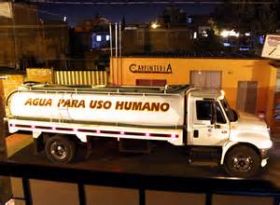 Most areas in Cabo use desalinization and they get water from the ocean. The houses, and hotels don’t have problems with water. It’s expensive, although I don’t have the exact figures but I know that water is more expensive in Cabo than in La Paz. One of the reasons why Cabo is an expensive place is because the water in Cabo is very hard to get. In general, the water supply in Los Cabos and La Paz is reliable except for the poor areas where water could be a problem...
Most areas in Cabo use desalinization and they get water from the ocean. The houses, and hotels don’t have problems with water. It’s expensive, although I don’t have the exact figures but I know that water is more expensive in Cabo than in La Paz. One of the reasons why Cabo is an expensive place is because the water in Cabo is very hard to get. In general, the water supply in Los Cabos and La Paz is reliable except for the poor areas where water could be a problem... Most areas in Cabo use desalinization and they get water from the ocean. The houses, and hotels don’t have problems with water. It’s expensive, although I don’t have the exact figures but I know that water is more expensive in Cabo than in La Paz. One of the reasons why Cabo is an expensive place is because the water in Cabo is very hard to get. In general, the water supply in Los Cabos and La Paz is reliable except for the poor areas where water could be a problem sometimes.
Most areas in Cabo use desalinization and they get water from the ocean. The houses, and hotels don’t have problems with water. It’s expensive, although I don’t have the exact figures but I know that water is more expensive in Cabo than in La Paz. One of the reasons why Cabo is an expensive place is because the water in Cabo is very hard to get. In general, the water supply in Los Cabos and La Paz is reliable except for the poor areas where water could be a problem sometimes. In La Ventana (a little town 40 miles southeast of La Paz), we don’t have the best water quality because our water is salty. Half of the houses in La Ventana have water supply service via water trucks. It’s better to have water tanks in your house and get them refilled with fresh water, delivered by a truck.
(Water truck, Mexico, pictured.)
Posted July 18, 2016
Cathie Smith LoCicero - Cathie Smith Insurance
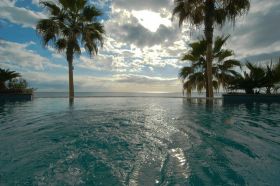 I've heard about water disruptions in La Paz. I've never lived there, but I do learn about these because I read the La Paz Gringos newsletter. In Los Cabos, there have been water disruptions as well.
I've heard about water disruptions in La Paz. I've never lived there, but I do learn about these because I read the La Paz Gringos newsletter. In Los Cabos, there have been water disruptions as well. The hotels are all required to have desalination plants. There is also an aqueduct that runs from Cabo San Lucas to San Jose del Cabo.
One of the reasons for water disruptions is that there has been an enormous increase...
 I've heard about water disruptions in La Paz. I've never lived there, but I do learn about these because I read the La Paz Gringos newsletter. In Los Cabos, there have been water disruptions as well.
I've heard about water disruptions in La Paz. I've never lived there, but I do learn about these because I read the La Paz Gringos newsletter. In Los Cabos, there have been water disruptions as well. The hotels are all required to have desalination plants. There is also an aqueduct that runs from Cabo San Lucas to San Jose del Cabo.
One of the reasons for water disruptions is that there has been an enormous increase in the population of Los Cabos – La Paz. When I moved to Cabo San Lucas in 1984, I was told that the population was 5,000 and that San Jose del Cabo had more because that was where the government offices were. When I left in 2008, I was told by the mayor's wife that within the Los Cabos municipality, they had 250,000 inhabitants. It was an enormous growth period for people coming there to work in the tourism industry, work in the construction of the beautiful homes and condominiums, and to build the hotels.
One of the ways people handle disruptions in the water supply is by ordering water from "pipa" trucks, which are water trucks. Even in my condominium when I was down there last month in Cabo San Lucas, we had to ask the water truck to come and fill our cistern. We have underground cisterns that have pumps that pump water up to the roof. You will see on a lot of the roofs that they have big, black, rubber tanks that are water-holding containers or rooftop cisterns.
Water disruptions are a concern, but you just buy more water from "pipa" trucks. Buying water this way can't be that expensive because people way out in the neighborhood would order from water trucks all the time.
(Infinity pool at the Sheraton Cabos San Lucas, Mexico, pictured.)
Posted June 14, 2017
Paul Clark - East Cape Homes
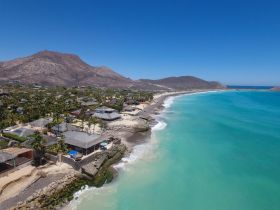 New developments such as hotels have their own water system because water resources are limited because they want to guarantee that they have water for their clients.
New developments such as hotels have their own water system because water resources are limited because they want to guarantee that they have water for their clients. There are only a few reliable wells that supply water. That’s why before building anything, one of the questions we would always ask is how many homes we can build before a water source is overpowered. At home, we have a well that supplies sufficient water for me and my family.
...
 New developments such as hotels have their own water system because water resources are limited because they want to guarantee that they have water for their clients.
New developments such as hotels have their own water system because water resources are limited because they want to guarantee that they have water for their clients. There are only a few reliable wells that supply water. That’s why before building anything, one of the questions we would always ask is how many homes we can build before a water source is overpowered. At home, we have a well that supplies sufficient water for me and my family.
Desalination works for us here. A good desalination plant that would produce 1,000 gallons a day would cost $20,000 plus another $20,000 - $40,000 to dig a well and for equipment and service, and more for solar power source, which is very expensive. The product of desalination is cool water that you can drink.
Most people use diesel generators for desalination. In Mexico, you are required to take water from a well, and all desalination plants discharge part of the water back. That water has to go into a reinjection well so it doesn’t go back to the ocean. The high-content saltwater needs to be injected back into another well so it gets filtered before it hits the ocean.
.png)
Most of the residents of San José del Cabo use about 100 gallons of water a day, excluding those with huge gardens.
(Corral reef next to this residential enclave, Cabo Pulmo, Baja California Sur, Mexico, pictured.)
Posted October 31, 2017


